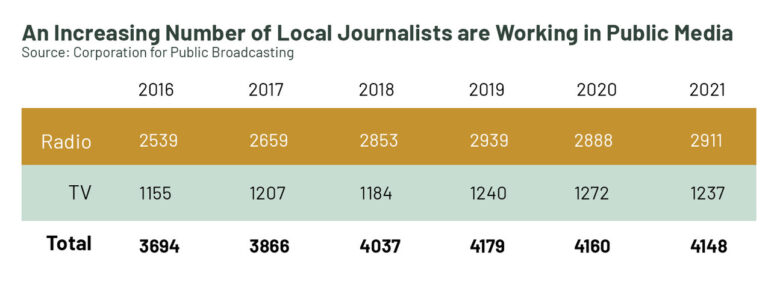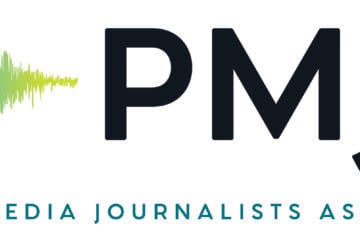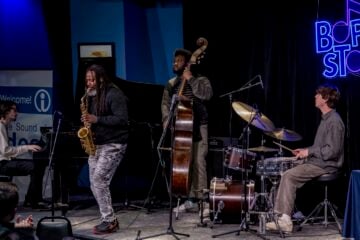Study documents expansion of public media journalism, collaborative news capacity

mattjeacock / iStock
In a four-part series, the co-authors of “The Growing Strength of Public Media Local Journalism” have excerpted their findings for the Current readership. In the report, the co-authors make the case for why public media stations are well positioned to play a meaningful role in efforts to rebuild local news. You can find the full report, including an introduction, methodology and report background, here. This research was made possible through the generous support of the Wyncote Foundation, for which we are grateful.
The co-authors will discuss their research Thursday at a free virtual Public Radio Program Directors conference, the PRCC Summit. You can learn more and sign up here.
In this section, we gather data from across the public radio system to paint a picture of growing news capacity. The data we gathered clearly show that the number of journalists working in public radio has increased, along with investments in new news formats and new forms of collaboration.
Increasing numbers of journalists work at a local public broadcasting station. Despite the significant headwinds facing local journalism in recent years, the number of journalists working in both local public radio and local public television has grown. Drawing from CPB data, our research found that between 2016 and 2021, the number of local journalists in public media grew from 3,694 positions in 2016 to 4,148 positions in 2021. By comparison, between 2016 and 2020, newspaper newsroom employment dropped from 42,450 to 30,820.1
A few public radio stations are growing newsrooms that rival the size of metro daily newspapers. More than 40 public radio licensees supported at least 15 full-time local reporting positions in FY2020.2 Of those licensees, more than 10 stations supported at least 40 full-time local reporting positions each. One licensee, WBUR in Boston, was nearing 100 full-time local news positions as of 2020. And in a remarkable advance for the public media industry, Chicago Public Media in Chicago announced in January 2022 that it was acquiring the Chicago Sun-Times (and its newsroom of about 100 people3) as part of a local journalism strategy that attracted $61 million in philanthropic funding.4

Increasing and maturing local journalism content
As local public media newsrooms have expanded, they have also become innovation hubs for local media, often hiring editorial talent from shrinking newspapers and expanding their public-service mandate to include text-based local news.
The most sophisticated public radio stations (and a few sophisticated public television stations) now have large multiplatform newsrooms with an array of local media products. These media organizations, like WFAE in Charlotte, N.C., and WBUR in Boston, are building on a foundation of local news broadcast formats which are, in some cases, decades old. In this section, we review the types of local journalism content being produced in public radio and television.
Local News Call-In Shows. Perhaps the most basic public radio local news format is the local news talk show. Often produced with listener call-in opportunities, these types of local shows create forums for live dialogue and debate on local issues and the local implications of national and international news. WNYC’s The Brian Lehrer Show, GBH’s Boston Public Radio with Jim Braude and Margery Eagan, and Detroit Today with Stephen Henderson are examples of local talk shows which have reached local institution status with loyal followings and longtime hosts. Of 119 NPR member station program schedules we analyzed in March 2022, we found 53% had at least one local news magazine (discussed below) or a news/talk call-in program running each weekday, Monday through Friday.
Local Newscasts. The NPR newscast format itself is a blend of local and national news. The NPR newsmagazine “clocks,” which structure and coordinate the on-air time of member stations in the popular commuting hours, leave segments open for local stations to produce and air their own local news content. According to the NPR audience insights team, local segments in the NPR One app consistently perform well, and listeners to local newscasts within the app return to the app at a higher rate than those who listen only to national news segments. Additionally, an October 2021 NPR audience insights listener survey found that 40% of listeners using the app “feel more connected to their local station and informed about local issues.”
Local Newsmagazines. In addition to call-in shows and hourly newscasts, some public radio and television stations also produce daily or weekly local news magazines. These formats, which are meant to mirror popular national offerings like PBS Newshour and NPR’s All Things Considered, are usually hourlong shows featuring a handful of local news stories. NJ PBS’s nightly news magazine NJ Spotlight News (rebranded and strengthened with the acquisition of the digital news website NJ Spotlight), WBUR’s Radio Boston, and Texas Standard, a statewide news program produced in collaboration primarily by four stations in Texas, are three examples.
Local News Digital Sites. The shift to public media digital news has been many years in the making, particularly among NPR member stations. NPR maintains a digital team focused on providing low-cost centralized digital platform support to stations of all sizes. The stations using the NPR-provided content management system are able to publish both national NPR News and local news content. The largest stations in the NPR member ecosystem maintain their own sophisticated digital news platforms, many with the ability to target content and messaging, recruit and convert new members, and deliver an array of sponsorship and advertising products. All of these sites host both listening and text-based local news products. Of 119 station websites the authors accessed online in March 2022, we found that 98% had published original local news content in the previous 24 hours. We also found that 50% were publishing an email newsletter focused on local news sent Monday through Friday.
Local News Podcasts. Many stations were distributing their local news talk shows, newscasts, and newsmagazines as podcasts long before the podcast renaissance gained steam in 2014. The exponential growth in podcast listening has birthed another wave of audio-based local news products in public media. The strongest local public media stations are producing new local news podcasts such as The KOSU Daily by KOSU in central and northeast Oklahoma, Vermont Public Radio’s The Frequency, and KQED’s The Bay. And the public media producer and distributor PRX now runs a local news podcast incubator to help local stations create new audio-based local news products.
The growth of local public media news collaboration
Even before the current focus on collaboration in mainstream journalism circles, public media was experimenting with building news collaborations across networks of licensees. These experiments have matured and are bearing fruit across the country. CPB has been particularly important as a source of investment in building collaborative news capacity across the public media system. According to CPB data provided to the authors, between 2009 and 2022, CPB invested more than $42.1 million across 41 local and regional news collaborations. These collaborations have spanned 150 public media stations and 42 states. Each collaboration team included one new reporter at each collaborating station and one new editor to manage the collaboration.
News collaboratives funded by CPB are instructed to find outside funding once their grant periods end. While some collaborations, such as EarthFix and Shifting Gears, stopped publishing online after their CPB grants expired, other collaboratives have continued to produce new stories, such as Fronteras and Ohio Valley ReSource.
Part III of the excerpted report, to be published Monday, will examine the outcomes of these findings for public media local journalism.
Elizabeth Hansen Shapiro is CEO of the National Trust for Local News. From 2020–22, she was a Senior Research Fellow at the Tow Center for Digital Journalism at Columbia Journalism School. Previously, Elizabeth led news sustainability research at the Shorenstein Center on Media, Politics, and Public Policy at the Harvard Kennedy School. She was the Research Director for the Membership Puzzle Project’s Guide to Membership and the Public Media Mergers Project. She received her Ph.D. in Organizational Behavior from Harvard Business School.
Mark Fuerst is founder of Innovation4Media (I4M), which has worked with public media stations, networks and association leaders to understand the public service and business opportunities of digital media. Since 2012, Mark has managed the Wyncote Foundation-supported Public Media Futures Project, to study the changing media landscape. He was co-founder and Executive Director of the Integrated Media Association (IMA). From 1986 to 1997, Mark was General Manager of WXPN-FM in Philadelphia, the station that developed the AAA music format for public radio. He was co-creator and executive producer of World Café, NPR’s AAA music program that airs on 581 stations.
Caroline Porter is a media strategist and researcher. She serves as Director of Impact and Strategic Partnerships at the National Trust for Local News. Caroline worked as a staff reporter for The Wall Street Journal in the Chicago and Los Angeles bureaus and served as an adjunct lecturer at Northwestern University’s Medill School. As a Fulbright Scholar in Northern Ireland, Caroline researched the role of media in the post-conflict region and earned a master’s degree with honors from Ulster University. You can find her on Twitter at @carolineporter.
- “Newsroom Investment,” Pew Research Center. Accessed 28 Sept. 2022: https://www.pewresearch.org/journalism/fact-sheet/newspapers/#newsroom-investment ^
- Station Resource Group analysis of data provided by Corporation for Public Broadcasting. ^
- “Newsroom Diversity Report,” Chicago Sun-Times. Accessed 29 Sept. 2022: https://chicago.suntimes.com/pages/newsroom-diversity ^
- Betsy Berger, “Chicago Public Media Announces Its Acquisition of the Chicago Sun-Times,” WBEZ Chicago. Accessed 29 Sept. 2022: https://www.wbez.org/pressroom/chicago-public-media-announces-its-acquisition-of-the-chicago-suntimes ^






